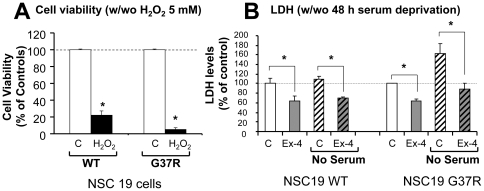Figure 3. Ex-4 is neuroprotective in NSC19 cells expressing either WT SOD1 or G37R SOD1.
(A) G37R SOD1 NSC19 cells are more vulnerable to oxidative stress (H2O2 (5 mM) for 24 h) than are WT SOD1 NSC19 cells. Cell viability assessed by MTS assay shows 22% cell survival in WT SOD1 cells v.s. 5% survival in G37R SOD1 cells (n = 6, * p<0.05). (B) Ex-4 reduced cell membrane permeability and protected cells from serum deprivation in both WT SOD1- and G37R SOD1-expressing NSC19 cells. Cells were cultured in no-serum media for 48 h in the presence and absence of 100 nM Ex-4. Cell viability was assessed by LDH assay. LDH levels were significantly reduced by Ex-4 treatment in both cells, under conditions of either Ex-4 alone or Ex-4 plus no-serum stress (C: vehicle-treated control; Ex-4: exendin-4; no serum: serum deprivation, n = 5, * p<0.05).

